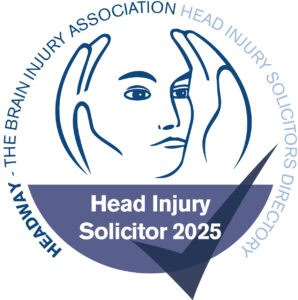
Brain Injury Awareness Week: Living Between the Highs and Lows of Brain Injury
“Have you had a good day?” is something we ask all the time – whether of a friend, partner, child or colleague. But for someone living a brain injury, this question can be surprisingly complicated.
This year, national brain injury charity Headway’s annual Action for Brain Injury Week focusses on what a “good day” really means for someone with a brain injury. It also highlights how unpredictable the effects can be – how someone’s abilities can change dramatically from one day to the next.
No two days the same
One of the hardest things about living with a brain injury is the inconsistency. Some days, symptoms are mild. On others, getting out of bed can feel impossible. The difference between a “good” and “bad” day isn’t just frustrating – it can be emotionally and physically exhausting, deeply distressing and isolating.
Things which seem simple on a good day – like replying to an email or going to an appointment – can feel completely overwhelming when symptoms such as fatigue, sensory overload, low mood or brain fog take hold.
Each brain injury is unique
Even when two people have the same diagnosis, their experiences can be vastly different. One person might return to work full-time. Another might struggle to manage daily tasks or socialise. This is why it’s so important not to make assumptions based on appearances, or a one-off meeting.
We see this all the time in our work. A client might seem well during an assessment or meeting, but a short interaction like this doesn’t reflect what they’re going through day to day.
Celine’s story: more than meets the eye
Take my former client, ‘Celine’. She suffered a moderate traumatic brain injury in a car accident. Before the crash, she worked in finance, loved travelling and volunteered at her local charity. She was smart, independent, highly motivated and full of energy.
At our first meeting, Celine brought a folder of neatly organised paperwork, a detailed list of events and a clear summary of her symptoms. If you’d only seen her that day, you might not have guessed she had a brain injury at all.
But as we continued to work together, I saw how different her good and bad days really were.
On good days, Celine could manage long meetings about complex matters, respond quickly to emails and enjoy time with friends or in her garden. On bad days, she couldn’t recognise herself. She couldn’t get out of bed, let alone manage a conversation or read an email. Fatigue played a huge part in this, clouding her mind and making basic decisions feel overwhelming. Sensory overload made noise and light intolerable. She felt emotionally distant from things and people she loved and cared about.
This wasn’t a case of being ‘up and down’ – it was the reality of living with a brain injury.
Over time, we built a way of working to support her on those ‘bad’ days while still progressing her case. We agreed on tougher days, anything non-urgent could wait, and we had a back-up contact if she needed extra support. Open communication helped us manage her legal case while making space for her recovery.
The role of rehabilitation
Specialist rehabilitation can be life-changing for people with a brain injury. This can include therapies such as occupational therapy, physiotherapy, counselling and psychiatric support. But simple daily habits also help – like following a routine, getting enough sleep and taking regular breaks.
Rehabilitation isn’t a quick fix. it’s a long-term commitment to rebuilding life around new needs. Without it, the path to recovery is much harder, and the risk of mental health problems, unemployment, and isolation grows.
Mind the gap: the difference between perception and reality
Celine’s story highlights something else we often see: just because someone looks okay, doesn’t mean they are.
Brain injury can be invisible, but the effects can be profound. People may appear to hold a conversation or return to work – but this doesn’t mean they’re not struggling with memory loss, planning and organising, fatigue or managing emotions. Unfortunately, people (including defendant lawyers) often assume if someone is doing well occasionally, they must be fine all the time. This is simply not true. These assumptions can be deeply upsetting, making people feel they’re being judged, disbelieved or seen as lazy.
As lawyers working with brain injury survivors, it’s our job to make sure our clients are heard and understood – not just for what they’re capable of on their best days, but for the full, fluctuating experience of living with a brain injury.
Brain injury survivors already face enough challenges – they shouldn’t have to fight to be believed about the ups and downs of their abilities too.









